
beauty /ˈbjudi/
noun
• that quality of a person or thing which is highly pleasing or satisfying to the mind; moral or intellectual excellence: we ascribe beauty to that which is simple; which has no superfluous parts; which exactly answers its end.
• that quality of a physical object or animal which is highly pleasing to the sight; perceived physical perfection; exceptional harmony of form or color: a thing of beauty is a joy for ever: its loveliness increases; it will nevery pass into nothingness.
• that quality of a thing which is highly pleasing to the senses generally: the sombre beauty of evening, with its deep stillness broken only by the low moanings of affliction.
verb
• to make beautiful or more beautiful; to adorn or decorate; to beautify: zinnias and other colorful summer flowers beautied the rooms.
Oxford English Dictionary, 3rd Edition
colin curley
8 the aesthetic niche: multispecies aesthetics in times of ecological crisis mariagrazia portera
16 circe: counter-narratives of beauty in renaissance landscape design luke morgan
24 asphalt + other ugly-beauties: a melting lexicon gretchen ernster henderson
36 beautiful eyesores: ways of seeing wind energy dan van der horst + saskia vermeylen
44 lake sihl: inventing a hydroelectric landscape sarem sunderland
52 getting to just green enough winifred curran, michelle stuhlmacher + elsa anderson
60 blackness and beauty: in conversation with brandi thompson summers libby viera-bland
66 sex in the city: panopticon or pornotopia? vincent
baptist
74 the physics of beauty adrian bejan
80 visceral beauty
jeffrey blankenship + jessica hayes-conroy
88 drawing landscape sanda iliescu
94 in conversation with elizabeth k. meyer Colin Curley
104 natural cosmetics nicholas holm
image credits
Upcoming Issues
4
Editorial
In This Issue
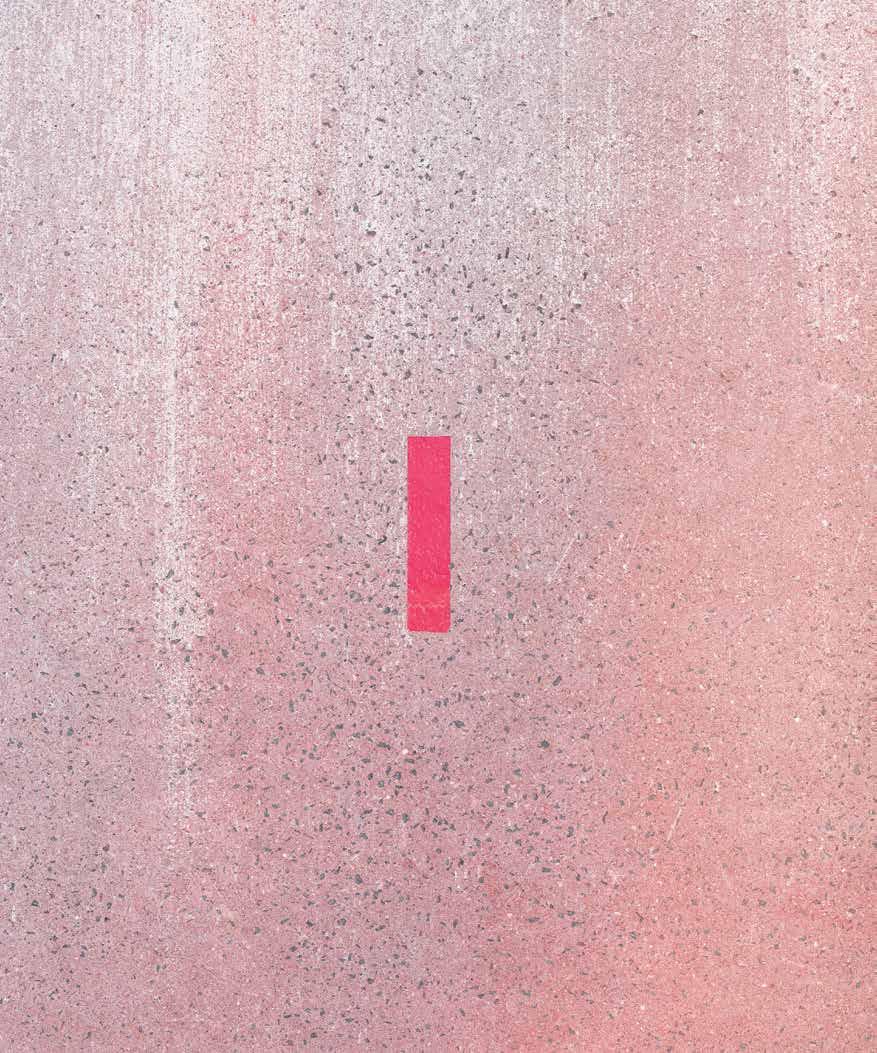
BEAUTY editorial
Upon opening this journal, you are greeted by a scene painted by Claude Monet, titled Impression: Sunrise. The hazy, atmospheric quality of the scene is characteristic of Monet’s work, and that of other impressionist painters who worked with rapid brush strokes to capture the ephemeral qualities of light and color en plein air. The blurring of the painting’s subject—the port of Monet’s hometown of Le Havre—led him to give the painting the title Impression, as “it couldn’t really be taken for a view of Le Havre.”1
While the emergence of the Impressionist movement can be considered as reflective of a shift in stylistic preference in the late 19th century, a recent study suggests that something else was at play in its formation: the Industrial Revolution and associated proliferation of smog and air pollution in European cities. In that study, climate scientists Anna Lea Albright and Peter Huybers note the evident progression over time from object to blurred atmosphere in Monet’s paintings. They also cite letters by the artist himself expressing his interest in and creative reliance on fog (the term ‘smog’ had not yet been created), “[W]hen I got up I was terrified to see that there was no fog, not even a wisp of mist: I was prostrate, and could just see all my paintings done for, but gradually the fires were lit and the smoke and haze came back.”2
Viewing the endpapers of this issue may or may not feel different to you now, after becoming aware of this study. Does it matter if the impressionist haze of Monet’s paintings was smog, or that he was relieved by the renewed presence of air pollution, which, centuries later, has amalgamated to create the climate crisis we now face? Is Impression: Sunrise less beautiful as a result?
There is of course no definitive or correct answer, and our respective answers likely differ. Beauty as a term and concept is complex and enigmatic, and it evades concrete definition. It can be appreciated visually and intellectually, taking on different forms and meanings in different cultures and contexts. It is the elusive nature of beauty’s definition that serves as the point of departure for this issue of LA+
This issue opens with a piece by Mariagrazia Portera, in which she explores the philosophical evolution of our understanding of beauty in the context of biological evolution and our present climate crisis. As humans, we are deeply entangled within our environment – perhaps more so than any other species, as our efforts to shape it to meet our needs and desires grip the entire planet. In return, this planetary crisis will inevitably shape us and pose not only existential but also aesthetic questions and dilemmas as environments change and species migrate and evolve to adapt to a warming world.
Perhaps, then, beauty in our present time isn’t benevolent, peaceful, or comforting –the limited definition and framework simply does not accommodate the depth and breadth of unpredictable environmental change to come. Yet the notion of beauty as something other than peaceful or comforting also has its place in history and mythology, as Luke Morgan writes in his piece centered on the enchantress Circe.
Opposite: Photographer Dan Piech spent four years searching every section of sidewalk in Manhattan to document accidental moments of overlooked beauty going unnoticed beneath New Yorkers' feet.
2 Elaine Velie, “Did Air Pollution Inspire Impressionism?” Hyperallergic (February 7, 2023), https://hyperallergic.com/796492/didair-pollution-inspire-impressionism/; “‘I Find London Lovelier to Paint Each Day’ – Claude Monet in London,” Tate (September 12, 2017), https://www.tate.org.uk/tate-etc/issue-41-
In it, landscape beauty carries a negative connotation – one of a false paradise, false nature, and entrapment. Beauty becomes suspect: what is beautiful is also potentially dangerous.
The range of what may be considered a beautiful landscape is explored by Gretchen Henderson through her discussion of Utah’s Great Salt Lake and its tar seeps, a complex and harsh ecosystem surrounded by strip mines, military testing sites, and suburban sprawl. Henderson’s research into the aesthetics of place is specifically situated in between the binaries of beauty and ugliness so as to broaden our perception of what can constitute environmental beauty. In her work, as with many of the authors in this issue, we can start to see the emergence of a new kind of landscape beauty, one that picks up where Robert Smithson left off.
Nevertheless, old images of landscape beauty are powerfully lodged in the public imagination. But as Dan van der Horst and Saskia Vermeylen write in their study of scenic value and windfarms, the notion of what constitutes an “eyesore” varies greatly depending upon one’s frame of reference. In this regard, Sarem Sunderland writes of a massive early-20th-century Swiss hydroelectric landscape designed in its entirety to conform to an artist’s landscape drawing of a beautiful alpine lake.

Beyond exploring questions of what can be considered beautiful, this issue also questions whose interests ideals of beauty serve. In their examination of the 606 and the proposed El Paseo trail in Chicago, Winifred Curran, Michelle Stuhlmacher, and Elsa Anderson argue that today’s urban “green” development opportunities require disinvested landscapes, and thus reinforce socioeconomic and racial inequalities. (Dis)investment in communities of color is among the subjects Brandi Thompson Summers discusses with Libby Viera-Bland in their broader conversation on Blackness and beauty that also touches on questions of representation, appropriation, and the racialized philosophical foundation upon which perceptions of beauty are built. And in an entirely different urban context across the pond, Vincent Baptist writes of design attempts to spatially organize the sex work industry within European cities, and how these spatial organizations privilege some and marginalize others.
In addition to cultural constructions of beauty we also turn to the science of beauty. Mechanical engineer Adrian Bejan, for example, argues that the definition of beauty is—biologically at least—fairly straightforward and tied to the physical parameters of sight. Once understood and reduced as such, beauty can then, according to Bejan, be mass produced. On the other hand, Jeffrey Blankenship and Jessica Hayes-Conroy downplay the role of the visual, arguing that beauty is visceral – tied to bodily need and physical comfort. For Sanda Iliescu, the question of beauty is both embodied and
Above: Hazy orange skies over San Francisco, California amidst wildfires north of the city on September 9, 2020.
1 Paul Smith, Impressionism: Beneath the Surface (H.N. Abrams, 1994).
6 editorial
autumn-2017/claude-monet-i-find-londonlovelier-paint-each-day.
visual. Through the discussion of her work Poem Drawing: A Little Less Returned for Him Each Spring, Iliescu explores the representation of landscapes and the capacity of drawing as a medium to represent the unfinished nature of landscapes as they change over time.
To bring these various threads back to landscape architecture LA+ spoke with Elizabeth Meyer, the author of several well-known texts on contemporary landscape aesthetics. Meyer speaks to how she became interested in aesthetics, the significance of entanglement for landscape architecture, and where she finds beauty and aesthetic innovation in the field today.
Nicholas Holm concludes the issue by proposing the concept of “Natural Cosmetics” as a framework from which to understand and evaluate ideals of natural beauty. Returning in some ways to provocations set forth by Mariagrazia Portera at the beginning of the issue, Holm questions how we might open ourselves up to new aesthetics in a denatured world.
The motivation for this issue of LA+ was a general sense that aesthetics are not adequately discussed in contemporary landscape architecture – that aesthetics are considered somehow secondary to other more pressing issues. I hope this collection shows that the two are not mutually exclusive: that issues are aesthetic and aesthetics are an issue.
Colin Curley Issue Editor

LA+ beauty/fall 2023 7
Mariagrazia Portera
Mariagrazia Portera is a research fellow in aesthetics at the Università di Firenze, Italy. Her areas of expertise and interest are the history of aesthetics (18th–19th century), the history of Darwinism, experimental aesthetics, and environmental and evolutionary aesthetics. Her work on epigenetics and evolutionary aesthetics has been published widely, including in The British Journal of Aesthetics
PHILOSOPHY, EVOLUTIONARY BIOLOGY, AESTHETICS
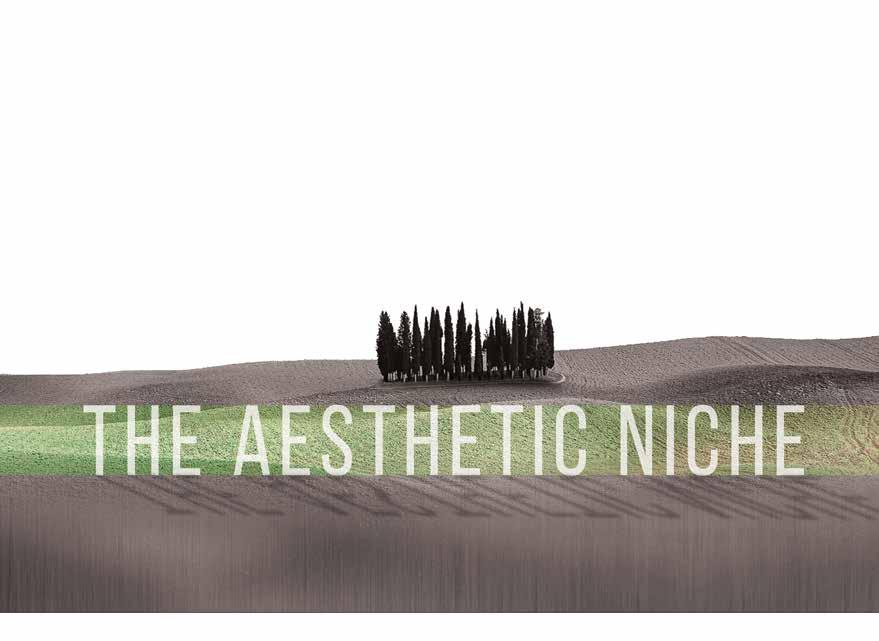
It is not obvious to answer the question “What is beauty?” Why do humans, from almost every culture in the world, invest so many resources in the beautification of their bodies, natural objects, and surroundings? Can we measure beauty? Are we biologically determined, as members of the species Homo sapiens, to find certain things invariably beautiful and others ugly?
Over the centuries, and within the framework of philosophical aesthetics, philosophers have championed an array of different hypotheses on beauty: some have argued that small, smooth, levigated forms are always and invariably beautiful (as opposed to angular and sharp ones, which are sublime; this is Edmund Burke’s view in his 1757 Inquiry into the Origin of Our Ideas of the Beautiful and the Sublime). Some others have contended that beauty is no quality in things themselves; “it exists merely in the mind which contemplates them; and each mind perceives a different beauty.”1 Turning the spotlight onto empirical and experimental research on beauty, attempts have been made to
multispecies aesthetics in times of ecological crisis

argue that there are universal standards of beauty concerning landscapes2 and human bodies, that humans are predisposed to find symmetrical forms and contours aesthetically pleasant, and that they are innately attracted to other humans’ faces (babies, in particular, tend to find symmetrical human faces most attractive).3 Other scholars have traced beauty back to fluency, to the simplicity and smoothness of stimuli processing dynamics, so that the easier it is for humans to perceive and/ or to conceptualize an object the more beautiful this object is judged to be.4 There have also been researchers making a case for comparative approaches to beauty, under the premise that it might be that at least some human aesthetic standards apply not only or not exclusively to the human species but also to other nonhuman animal species, more or less phylogenetically close to us.5
A difficult point, when it comes to investigating the concept and standards of beauty, is whether it is possible to isolate
biological-natural (allegedly universal) components of the beautiful (i.e., features or traits that are invariably perceived as beautiful by humans due to species-specific biological/ cognitive/perceptual constraints) from cultural (relativisthistorical) ones; and, if so, how these two components are or should be integrated.6
The concept of beauty is a unitas multiplex – a multifaceted, malleable, and multi-layered notion in which many elements intervene. Whenever humans experience something as beautiful (or whenever we have an aesthetic experience, since beauty represents only one of the several forms of aesthetic experience possible in the world) it involves at the same time perception, emotion, cognition, and imagination together with a self-reflecting activity on the part of the experiencing subject (“how does the experience I am having right now make me feel?”). This is why aesthetic experiences require time, and duration, to happen: although they certainly have to do with
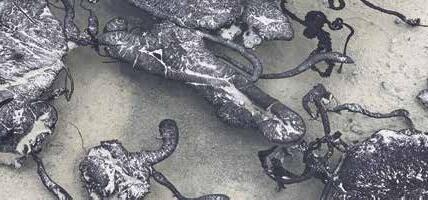
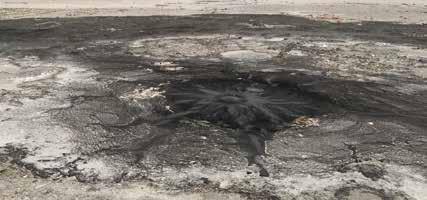
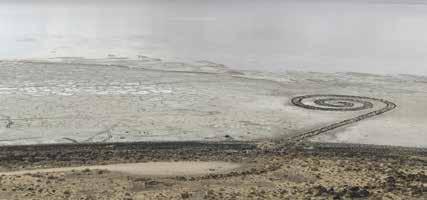


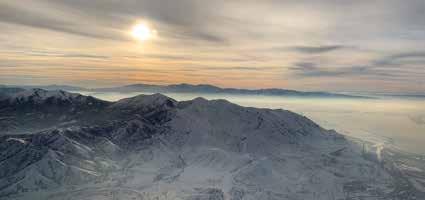

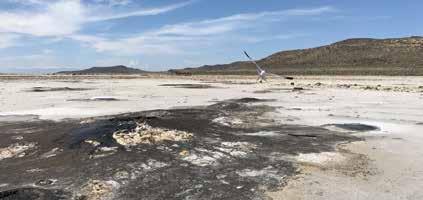

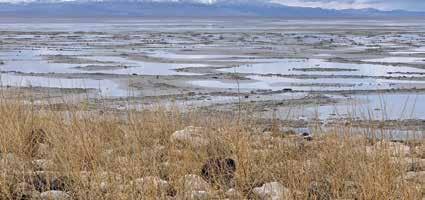


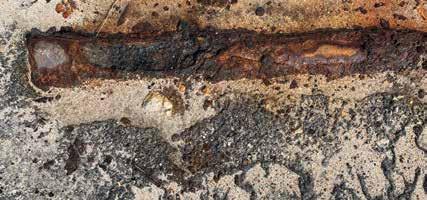


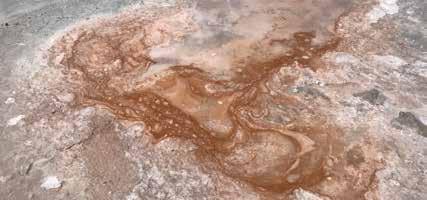


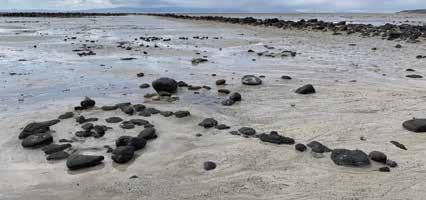

Getting to Just Green Enough
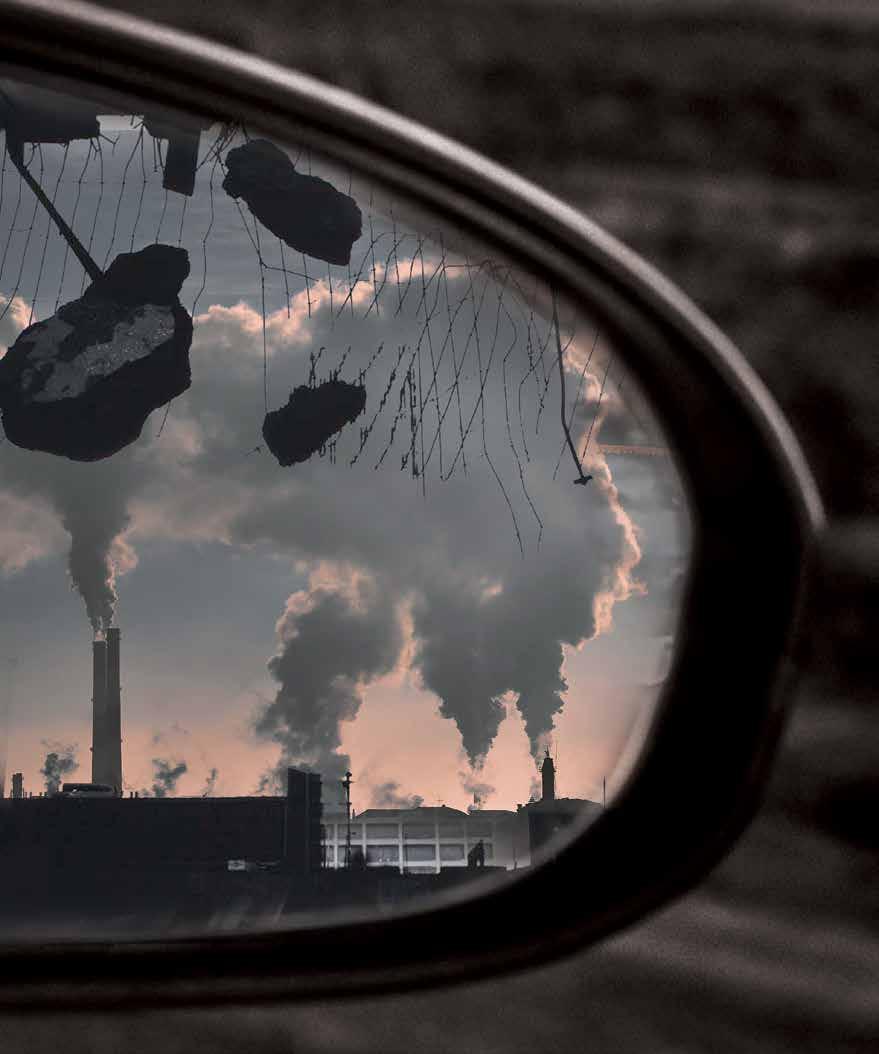 Winifred Curran, Michelle Stuhlmacher + Elsa Anderson
Winifred Curran, Michelle Stuhlmacher + Elsa Anderson
Winifred Curran is a professor of geography at DePaul University in Chicago. She is the author of Gender and Gentrification (2018) and coeditor, with Trina Hamilton, of Just Green Enough: Urban Development and Environmental Gentrification (2018).
Michelle Stuhlmacher is an assistant professor of geography at DePaul University. Her research employs satellite imagery to measure green space and its social and environmental impacts on urban systems.
Elsa Anderson is an assistant professor of instruction at Northwestern University, Illinois, and an affiliate scientist the Chicago Botanic Garden, where she leads the Chicago Biodiversity Project. Her expertise is in urban social-ecological systems and plant ecology, and particularly connecting people with the other species that live in cities.
PLANNING, ENVIRONMENTAL JUSTICE
Where we choose to see beauty in the urban landscape shapes urban development. Some understand the gentrification of urban neighborhoods through the economic concept of the “beauty contest,”1 in which our understanding of a neighborhood is shaped by what we believe other people think about that place. One powerful tool in shaping this perception is the proliferation of expensive greening projects in urban areas that have previously experienced disinvestment. This creates green gentrification, a process where new green investment spurs development that leads to an increase in real estate costs and, therefore, the displacement of longterm residents.2
Evidence clearly shows that greening in previously disinvested neighborhoods can lead to gentrification. The most famous example is New York’s High Line, a rails-to-trails park that raised property values in the surrounding area by 103%.3 In Chicago, the 606 rails-to-trails project raised surrounding property values by 48%,4 and Atlanta’s BeltLine project increased property values up to 26%.5 This leads marginalized communities to be wary of new green space projects, worried they will have to choose between greening and affordability.6 We describe the fight in one historically underserved Chicago neighborhood, Pilsen, to learn from these examples by working to accomplish measurable environmental improvements in ways that are impactful for current residents without being “beautiful” enough to further spur gentrification.
The legacy of uneven development and racial segregation in American cities has led to a profound “green gap” that “emerges when land deemed vacant, underused, or contaminated is identified by developers as a possible area to be ‘greened,’ generating amenities that may allow for higher economic value and profit accumulation.”7 In other words, today’s green opportunities require disinvested landscapes and thus build upon and reinforce existing socioeconomic and racial inequalities. In realizing the “green gap,” projects intended to improve environmental outcomes reinforce and exacerbate conditions that further inequity, marginalization, and displacement. Too rarely do these projects start with an equity lens and include concrete measures for ensuring that greening solutions benefit all residents.
To counter green gentrification that exploits this “green gap,” Curran and Hamilton suggested the “just green enough” strategy,8 which aims to forestall green gentrification by engaging in community-led greening initiatives that prioritize meaningful environmental justice improvements over aesthetics. There are many ways to be green and to find beauty in the urban landscape beyond a highly curated park. The just green
LA+ beauty/fall 2023 53
Poem Drawing: A Little Less Returned for Him Each Spring, No. 1
Poem Drawing: A Little Less Returned for Him Each Spring, No. 2
Poem Drawing: A Little Less Returned for Him Each Spring, No. 13
Poem Drawing: A Little Less Returned for Him Each Spring, No. 14
Poem Drawing series (2002 to present) is created with graphite and colored pencil on paper, 12 in. x 20.5 in.
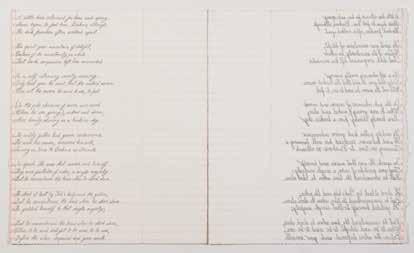

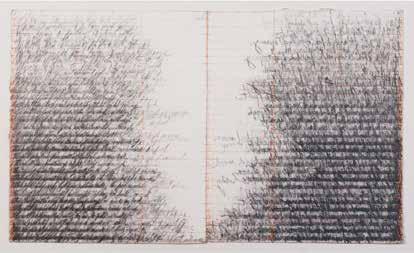
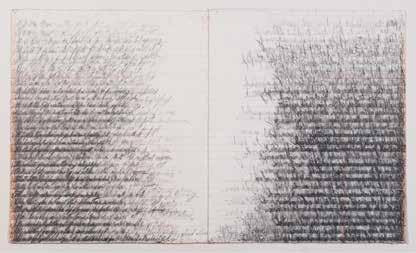
90 drawing landscape
Poem Drawing: A Little Less Returned for Him Each Spring, No. 5

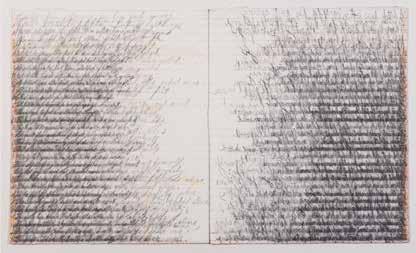
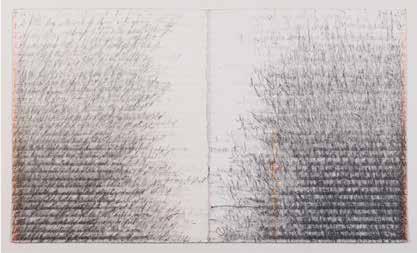

Poem Drawing: A Little Less Returned for Him Each Spring, No. 10
Poem Drawing: A Little Less Returned for Him Each Spring, No. 19
Poem Drawing: A Little Less Returned for Him Each Spring, No. 20
LA+ beauty/fall 2023 91
IN conversation with


+ You’re well known for your scholarship on beauty and aesthetics in landscape architecture. What led you to explore those topics?
Elizabeth K. Meyer is Merril D. Peterson Professor of landscape architecture at the University of Virginia and founder of the UVA Center for Cultural Landscapes. Since the late 1980s, she has been a leading critic and theorist of landscape architecture, focused on materiality, experience, and contemporary cultural issues. In particular, Meyer has written and lectured extensively on beauty and aesthetics in landscape architecture, including her manifesto “Sustaining Beauty” (2008) and subsequent essay “Beyond Sustaining Beauty” (2015). In 2019, the Journal of Landscape Architecture dedicated an issue to Meyer’s scholarship titled, “Sustaining Beauty and Beyond.” Meyer is the recipient of numerous teaching awards, and was nominated by President Barack Obama to the US Commission of Fine Arts, where she served from 2012–2021. UVA alumnus Colin Curley caught up with Meyer on behalf of LA+.
Two different things. The first is the class on theories of modern landscape that I was asked to create and teach at the [Harvard] GSD in the late 1980s. I was intrigued by a couple of recent articles written by Evelyn Bauer, Carolyn Constantine, and an earlier book by Peter Collins, where the picturesque was being described as the first cultural product of artistic modernity, and if you’re talking about the picturesque, you have to start reading about aesthetics.
From that reading emerged the recognition that the picturesque was not just what something looked like, but one’s experience of a place. You knew it was the beautiful, the picturesque, or the sublime because of how you felt, not just what you saw. That particular introduction to the sublime and awe was interesting because it raised the question whether it has anything to do with what we do now because we’re not talking about the Alps, the Grand Canyon, a cathedral, or a mosque. It was really more me interrogating and excavating landscape history and trying to enrich our understanding of design theory that is still germane today. The link between the picturesque and the modern era was, of course, Robert Smithson’s essay “The Monuments of the Passaic.”
In the late 1990s when I had started teaching at UVA, I received an invitation from the faculty at the GSD to participate in an event related to Rich Haag that included an exhibition, a publication, and a trip to Seattle to meet Rich with a group of GSD students and Gary Hilderbrand. That experience with Rich changed the way I decided to write as a theorist and a critic. Part of it was that I had to communicate not just what I was learning about the Bloedel Reserve or Gasworks Park, but how I was feeling walking around and listening to Rich talk about them in real time. I was learning about the history of the site from him, but also recognizing this cognitive dissonance between what he was seeing and saying and what I was feeling. It made me realize, “Aha, I’ve got to write about this.”
At the time, Kate Nesbitt, Jean-François Lyotard, and a group of other theorists, architects, and artists were writing about the post-modern and post-industrial sublime. I realized it mapped on to Rich’s work beautifully because they were talking about an experience of awe, dread, uncertainty, vastness, and the infinite that wasn’t about spatial vastness, but about temporal uncertainty.
To give an example of how that was affecting me, Rich spoke about “The time we pulled little Kitty’s yellow slicker out of the lake, and it was eaten because of all the chemicals that were leaching into the water. We realized – ‘we’ve got a plume,’” and about going around with a little pocketknife and scraping off the tar and crud that was oozing through the surface so that no one would see it. It was striking: this place just looks stable and yet it’s alive. The surface and the subsurface are alive.
Opposite: Edge between two tree groves, Land Lab in Alnarp, Sweden.
LA+ beauty/fall 2023 95
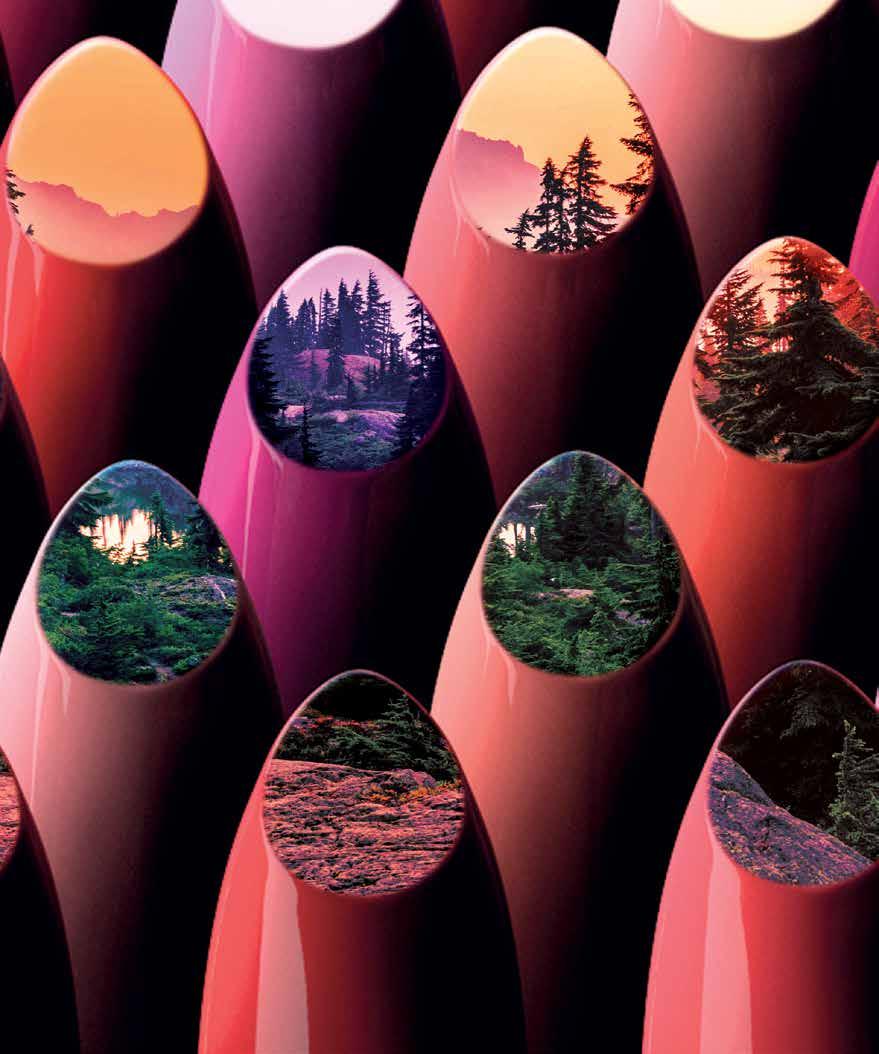
and exploitation. However, it nonetheless remains a relatively rigid system that assumes that under ideal conditions—when everything is as it should be—certain species ought to inhabit certain environments in certain numbers arranged according to certain relationships. The transition from an economicethical orientated cosmetics to one informed by notions of ecology and environmentalism has transformed our shared sense of the proper order of nature, but a sense of the proper nonetheless persists. And importantly, this is not simply a scientific and rational but also a deeply aesthetic set of beliefs.
The concept of cosmetics helps us understand the extent to which claims about the environment are never entirely scientific – they always carry a touch of the aesthetic. Several important points follow from this. Not least that conservationists are as much cosmetic technicians as they are ecological managers. When they help revive populations of endangered species, restore the flow of rivers, or remove toxic waste from an environment, conservation practitioners are not just returning ecosystems to more “pristine” conditions, but in doing so, are making an aesthetic intervention that renders them beautiful according to conventional cosmetic standards. This observation is not meant to trivialize their work—beauty is incredibly important—but rather to shed light on a too-often overlooked aspect of such practices, which are overwhelmingly characterized as scientific, rather than aesthetic, interventions. However, they are not only (or even) “repairing” damage. They are making use of technological tools to restore the natural world to its previous appearance: pest-trapping and replanting as ecological Botox to help an environment get back its looks from when it was young(er) and pretty.
Acknowledging the aesthetic-cosmetic elements of ecological practice also acts to undermine long-standing distinctions between ecological and landscape practice. It does this not by asserting that design ought to be subordinated to “natural” processes,23 but rather by suggesting that ecological actions may be more aesthetic than their champions would usually like to consider. Framed in this way, beauty is not simply an element that ought to be considered in discussions of landscape, but rather one that we cannot help but consider, because it is baked into our ecological thinking in ways that we are not accustomed to notice or realize. Thus, the question is not whether or not beauty is “sustained” but whether or not it is done so consciously and explicitly. Approached in this way, the choice is less between nature and culture understood as distinct and opposed principles,24 and more about whether an environmental intervention aligns or breaks with the prevailing cosmetic order. Does it put things back “where they belong,” or instead choose to scatter the pieces and color outside the lines?
1 Jules Levallois, Memoire d’un Critique (Libraire Illustrée, 1895), 93 (author’s translation). Although this quotation is usually directly attributed to Charles Baudelaire, the only formal recording is Levallois’s memory of Baudelaire’s remark.
2 S. L. Sarkar, Marine Algal Bloom (Springer, 2018), 1–2.
3 Jeremy Hance, “Lethal algae blooms –an ecosystem out of balance,” The Guardian (January 4, 2020); Clare Davis, “Bloom or Bust,” Nature Reviews Earth & Environment
2, no. 447 (2021); David Mack, “How To Protect Yourself (And Your Dogs) From Toxic Blue-Green Algae This Summer,” Buzzfeed News (May 19, 2022); Amber Allott, “Fears climate change could tip toxic algae to deadly levels,” Stuff.co.nz (January, 17 2022); Priya Shula, “‘Red Tides’ Are Currently Blooming In Southern California,” Forbes (April 30, 2022).
4 Mark Trieb, “Ethics ≠ Aesthetics,” Journal of Landscape Architecture 13, no.2 (2018): 30–41.
5 Autumn Whitefield-Madrano, Face Value: The Hidden Ways Beauty Shapes Women’s Lives (Simon & Schuster, 2016); Naomi Wolf, The Beauty Myth (Chatto & Windus, 1990).
6 Philip Sidney Horky, “When did Kosmos become the Kosmos?” in Philip Sidney Horky (ed.), Cosmos in the Ancient World (Cambridge University Press, 2019), 22–41.
7 Immanuel Kant, Critique of the Power of Judgement, trans. by Paul Huyer & Eric Matthews (Cambridge University Press, 2000).
8 Ibid., 185.
9 Ibid., 181.
10 Ibid., 242–78; 293–301.
11 Hannah Ginsborg, “Kant’s Aesthetics and Teleology,” Stanford Encyclopedia of Philosophy, https://plato.stanford.edu/ entries/kant-aesthetics/#3.1.
12 There is, of course, some scope for variation in how these factors are experienced: it is a tendency, rather than a rule.
13 David Gissen, Subnature: Architecture’s Other Environments (Princeton Architectural Press, 2009), 210.
14 Ibid., 150.
15 Vittoria Di Palma, Wasteland: A History (Yale University Press, 2014), 9.
16 Elizabeth K. Meyer, “Beyond ‘Sustaining Beauty’,” in M. Elen Denning (ed.), Values in Landscape Architecture and Environmental Design (Louisiana State University Press, 2018), 30–53, 33.
17 Elizabeth K. Meyer, “Sustaining Beauty. The Performance of Appearance,” Journal of Landscape Architecture 3, no. 1 (2012): 6–23, 20.
18 Frédéric Gros, A Philosophy of Walking, trans. by John Howe (Verso, 2014), 153–56.
LA+ beauty/fall 2023 109
IN THE NEXT ISSUE OF
A vast network of material and informational exchanges link botany to landscape design. As we scan nursery catalogs to select our favorite species and cultivars for a proposed design, much is concealed or forgotten about the seedy histories of colonization of which plant breeding, trade, and botanic gardens have played a central role. The blossoming interest in plants among environmental historians, science studies scholars, philosophers, and others are shedding light on these entanglements. LA+ botanic considers our evolving relationship with plants with contributors reflecting on what new natures and people-plant relations are being materialized in plant breeding, plant conservation, botanic garden design, and botanic art today. Guest-edited by Karen M’Closkey, contributors include:
Giovanni Aloi
Irus Braverman
Patrick Blanc
Xan
Sarah Chacko
Sonja Dümpelmann
Jared Farmer
Annette Fierro
Matthew Gandy
Ursula K. Heise
Andrea Ling
Janet Marinelli
Karen M’Closkey
Beronda L. Montgomery
Catherine Mosbach
Katja Grötzner Neves
Bonnie-Kate Walker
O UT spring 2024
LA+ (Landscape Architecture Plus) from the University of Pennsylvania Weitzman School of Design is the first truly interdisciplinary journal of landscape architecture. Within its pages you will hear not only from designers, but also from historians, artists, philosophers, psychologists, geographers, sociologists, planners, scientists, and others. Our aim is to reveal connections and build collaborations between landscape architecture and other disciplines by exploring each issue’s theme from multiple perspectives.
LA+ brings you a rich collection of contemporary thinkers and designers in two issues each year. To subscribe follow the links at www.laplusjournal.com.
SPECULATION FALL 2022 community spring 2021 Interdisciplinary Journal of Landscape Architecture simulation fall 2016 identity spring 2017 risk fall 2017 wild spring 2015 pleasure fall 2015 tyranny spring 2016 imagination spring 2018 time fall 2018 design spring 2019 iconoclast fall 2019 vitality spring 2020 GEO fall 2020 CREATURE
2021 INTERRUPTION SPRING 2023 beauty fall 2023 BOTANIC SPRING 2024 exotique fall 2024 GREEN spring 2022 15
FALL

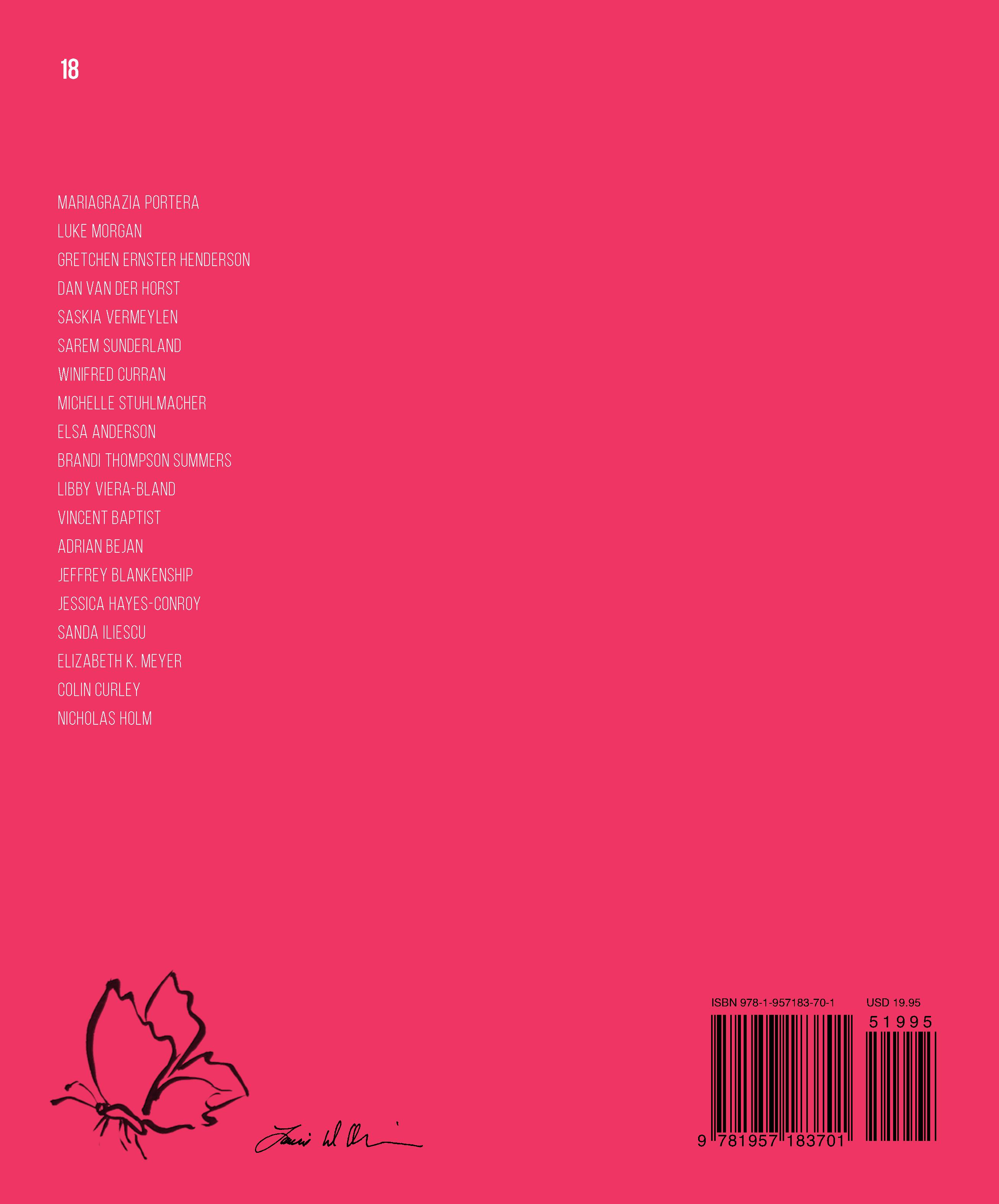



























 Winifred Curran, Michelle Stuhlmacher + Elsa Anderson
Winifred Curran, Michelle Stuhlmacher + Elsa Anderson












